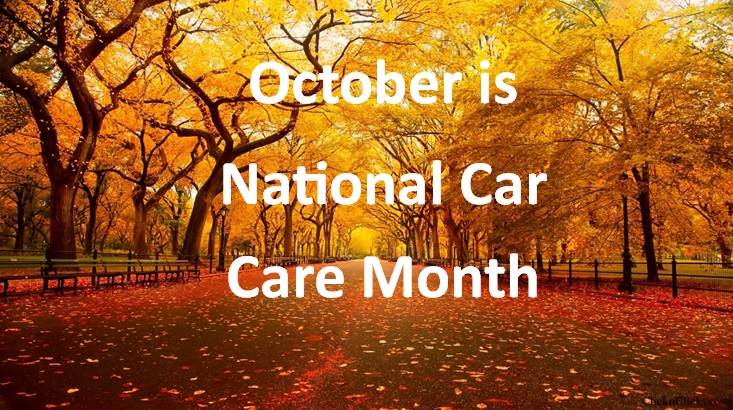
October is National Car Care Month
As Fall approaches and the promise of winter nears it is important to make sure that your vehicle is ready to carry you safely to your holiday destinations. A few simple checks beforehand can ensure your safe travels.
Heating, Wipers & Lights
Test your heater, defroster and windshield wipers to make sure they work properly. Consider winter wiper blades and use cold-weather washer fluid. As a general rule, wiper blades should be replaced every six months.
Check to see that all exterior and interior lights work and headlights are properly aimed. One way to tell if headlights are correctly aimed is to park the vehicle on a level surface and shine the headlights on a garage door or wall 25 feet ahead (some cars may require a different distance). The top of the low beam shining on the wall should be at or slightly below the height of the center of the headlight lens for most vehicles. You should expect the light pattern to be higher on the right side (passenger side) to illuminate road signs and lower on the driver’s side to prevent blinding other drivers. This should give you a good idea of whether the beams on both sides are aimed correctly. Another method is to pull the vehicle within 5 feet of the wall and then use masking tape to mark the vertical and horizontal centers of the light beams on the wall. Move the vehicle back 25 feet. With the aid of the tape line, the light beams should be roughly the same height vertically and horizontally.
Tires
Check the tire tread depth and tire pressure of all tires, including the spare. Put a penny in your tire tread grooves with the top of Abe’s head facing down. If you can see the top of his head, that tire is spent and needs to be replaced. Honestly. During winter, tire pressure should be checked weekly. Tire inflation levels are measured in psi (pounds per square inch). Because air pressure can decrease up to 10 psi a month just through every day driving and may potentially drop 1 psi for every 10 degrees Fahrenheit temperature drop, it’s important to ready your ride. When tire tread is reduced or your tire pressure is not correct, your vehicle is at greater risk of hydroplaning. If snow and ice are a problem in your area, consider special tires designed to grip slick roads.
Wheel Alignment
The most common signs of misalignment are pulling to one side while you're driving, unusual tire wear and/or a steering wheel that's off-center even though your vehicle is pointed straight. Even the slightest misalignment from hitting potholes and normal wear and tear can lead to premature tire wear – even if your car’s alignment is off by 100th of a degree or inch. When this happens, it can lead to further misalignment and the need to replace your tires sooner than you hoped.
Brakes
Have the brakes checked. The braking system is the vehicle’s most important safety item. Bad sounds can be signs that your brakes need work. When you push down the brake pedal, do you hear screeching, grinding, rubbing or squealing? These sounds may mean your brake pads need work or your rotors need replacing. Another sign something is wrong- when you step on the brake pedal and the car doesn’t stop! Don’t let it get to that point!!!
Gas, Oil & Filters
Keep your gas tank at least half full throughout the cold weather to prevent moisture from forming in gas lines and possibly freezing.
Be diligent about changing the oil and filter at recommended intervals. Dirty oil can spell trouble in winter. The “W” in your type of oil stands for “winter.” And the number before the “W” (i.e. SAE 5W30) lets you know how easily this oil will pump at low temperatures. 0W is for very low temperatures, and higher numbers like 10W are designed for milder winter weather. Consider changing to “winter weight” oil if you live in a cold climate.
Check the fuel, air and transmission filters at the same time.
System Checks – Charging, Cooling & Exhaust
Have the battery and charging system checked, as cold weather is hard on batteries.
Clean, flush and put new antifreeze in the cooling system. As a rule of thumb, this should be done every two years.
Have the exhaust system checked for carbon monoxide leaks, which can be especially dangerous during cold weather driving when windows are closed.
Pack the Essentials
Your vehicle should always have an emergency kit with jumper cables, a flashlight, blankets, extra clothes, bottled water, nonperishable food and a first aid kit with any needed medication.